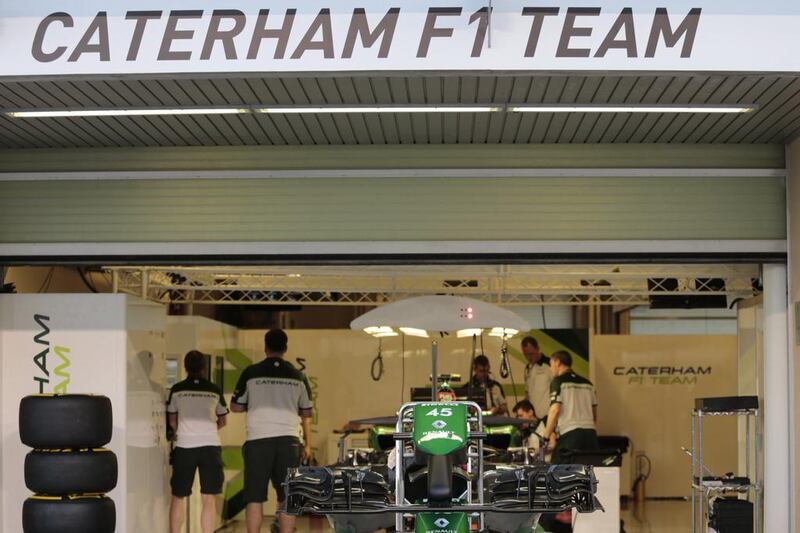Monday's announcement that Caterham can compete in F1 in 2015 with an old car is the first visible sign that quantity on the F1 grid remains the focus of the sport rather than quality.
The potential and still, at this stage, probable demise of the team would have left F1 with 18 cars competing next year, the lowest grid to start a season in recent years.
Giving Caterham every opportunity, and more importantly time, to find a buyer prevents the potential scenario of three-car line-ups from some teams happening.
The issue for the administrators at Caterham is finding someone to step in and fund what will be unquestionably an uncompetitive entity, at least in the short-term.
Caterham have not scored a point in five seasons racing in F1 and they have remained a perennial tail-ender throughout their time in the sport.
They, like the defunct Marussia, signed up for F1 in the summer of 2009 under the false premise of a budget cap in F1 – at the time £40 million (Dh231.4m) – to reduce spending in the sport.
That measure had been pushed heavily by the FIA president Max Mosley as a way of adding more teams to the sport, but the threat of a breakaway series as competing teams baulked at the move led to it being abandoned.
The consequence has been that the big teams have continued to spend heavily, while Caterham, Marussia and Hispania Racing Team, who all signed up for 2010, were on a loser from the start, as the goalposts were changed and all have had to compete with much smaller budgets and resources.
Marussia and HRT are gone and Caterham are teetering on the brink.
Even if a buyer does come in they face a tough 2015.
The car was slow this year, though, given their resources, it was impressive Kamui Kobayashi was only 1.7-seconds slower than the next slowest car in qualifying in Abu Dhabi last month.
But in year-old machinery, up against newer cars and technology, it is not hard to imagine the margin being even more emphatic if they do make it to Australia next March.
Essentially the 2015 season becomes about survival and that may mean simply turning up rather than being remotely competitive. That is going to be a hard thing to sell to the people interested in taking on the team.
gcaygill@thenational.ae
Follow us on twitter at @SprtNationalUAE





